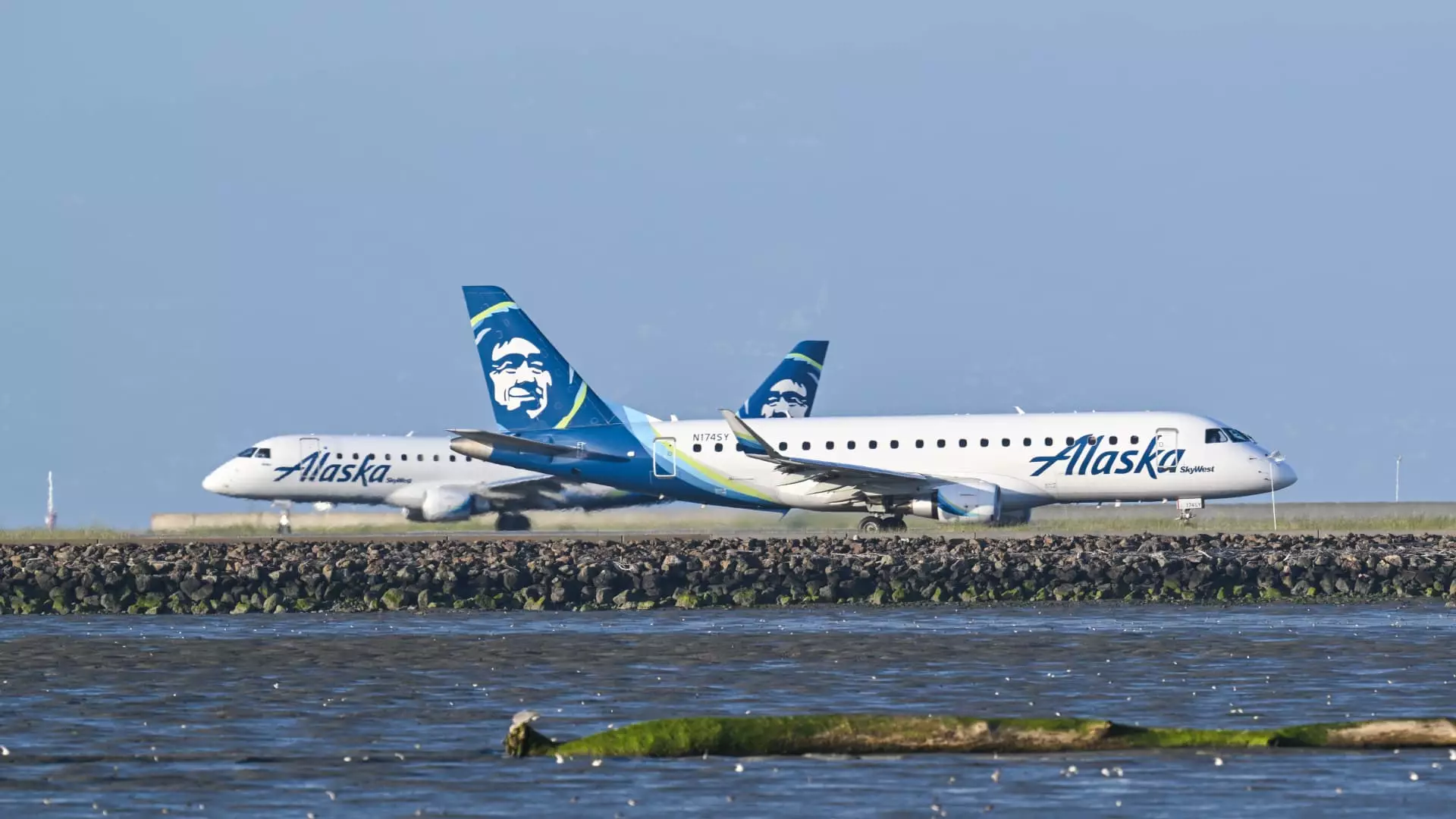Alaska Air Group is poised for a significant transformation in the travel landscape, expecting to increase its profits by an impressive $1 billion by 2027. This optimistic forecast hinges on the growing demand for premium travel experiences, a sector that is gaining traction as more consumers opt for enhanced flight options. The airline has made noteworthy maneuvers, including a strategic acquisition that positions it favorably in international markets, promising an exciting future for travelers, shareholders, and the aviation industry alike.
In a bold move, Alaska Air Group finalized its acquisition of Hawaiian Airlines for $1.9 billion in September. This strategic alliance not only expands Alaska’s footprint but also opens up new routes across the Pacific, facilitated by Hawaiian’s impressive fleet, including the state-of-the-art Boeing 787 Dreamliner. As these two airlines operate separately, Alaska is gearing up to launch its first nonstop services to Tokyo’s Narita International Airport and Seoul’s Incheon International Airport in 2025, utilizing Hawaiian’s Airbus A330-200s. This tactical approach taps into the burgeoning market for international travel, with the airline aiming to serve at least a dozen global destinations from its Seattle-Tacoma hub by 2030.
Alaska Air Group remains confident about its financial trajectory, projecting pretax margins between 11% and 13% by 2027. The airline’s per-share earnings could surpass $10, while the forecast for 2024 stands at between $3.50 and $4.50, including contributions from Hawaiian Airlines. Such optimistic forecasts are indicative of Alaska’s strategic planning and efforts to enhance operational efficiencies post-acquisition. The airline’s robust performance is vital in a competitive landscape, especially as it contemplates how to translate operational gains into tangible profits for stakeholders.
Recognizing shifts in consumer behavior, Alaska Air is pivoting towards a focus on premium travel experiences. Chief Financial Officer Shane Tackett highlighted the growing demand for premium economy and first-class seats, noting that more passengers are purchasing these seats outright, rather than relying on complimentary upgrades. This trend reflects the increased willingness of travelers to invest in comfort, particularly on longer flights. In response, Alaska intends to upgrade its premium seating offerings, particularly on the recently acquired A330s, signaling a commitment to meet evolving customer needs in the competitive airline market.
To diversify its revenue streams, Alaska Airlines is also set to launch a new premium credit card in partnership with Bank of America. This initiative underscores the airline’s strategy to monetize its brand beyond traditional ticket sales. By capturing customer loyalty even when they aren’t flying, Alaska bolsters its financial resilience and enhances its engagement with travelers. This move highlights an understanding that customer experience extends beyond the flight itself, tapping into financial incentives that keep the travel brand top-of-mind.
Despite its aggressive expansion plans, Alaska Air faces challenges that could impact its operational efficiency. A near-catastrophic incident involving a Boeing 737 Max 9 has raised concerns about aircraft quality control, an issue compounded by a recent machinists’ strike that halted aircraft production. As Alaska navigates these challenges, Tackett emphasizes the importance of prioritizing quality over output rates, ensuring that safety and reliability remain at the forefront of their operations. The airline’s ability to maintain strong ties with Boeing and adapt to production realities will be crucial in sustaining its ambitious growth trajectory.
In its home base of Seattle, Alaska Air enjoys a dominant position with a 55% market share in domestic passenger services. However, Delta Air Lines, with its substantial 24% share and broader international presence, remains a formidable competitor. As Alaska operates more premium services and expands its international routes, it must strategically position itself to attract discerning travelers while maintaining its edge in local markets.
As Alaska Air Group charts its course towards a billion-dollar profit increase by 2027, it’s clear that the airline is focused on innovative strategies that align with current travel trends. While challenges persist, the company’s emphasis on premium offerings, strategic acquisitions, and diversified revenue streams indicate a proactive approach to navigating an evolving industry. With its sights set on the horizon, Alaska Air is not just preparing for growth but is redefining what it means to soar in the competitive world of aviation.

